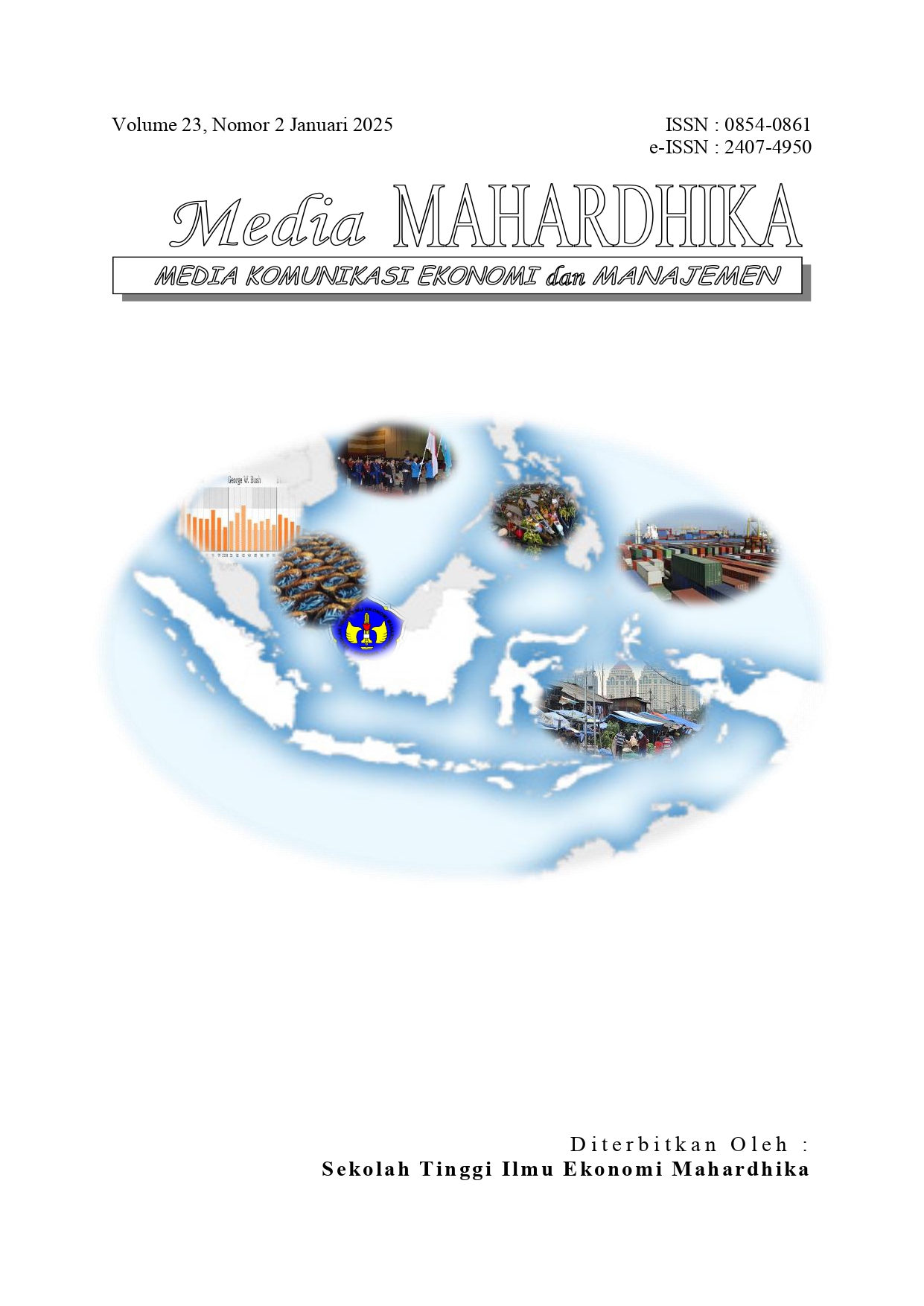PENERAPAN EKONOMI SIRKULER DALAM MENGURANGI EMISI KARBON DI PROVINSI SULAWESI TENGGARA
DOI:
https://doi.org/10.29062/mahardika.v23i2.1246Kata Kunci:
Circular Economy, Carbon Emissions, PerceptionAbstrak
This research aims to analyze the perceptions of the people of Southeast Sulawesi regarding the implementation of a circular economy in an effort to reduce carbon emissions. The circular economy offers a sustainable economic model that focuses on reducing waste through recycling, reuse and extending the life of products. In Southeast Sulawesi, waste generation predominantly comes from households (around 60%) and is dominated by food waste (53.22%) providing great opportunities for implementing a circular economy. The research results show that people have a positive attitude towards the circular economy, as indicated by the average value of the questionnaire items which ranges from 3.37 to 3.83. However, there are variations in perception that indicate the need for further outreach in several aspects of the circular economy. In conclusion, implementing a circular economy in Southeast Sulawesi can contribute significantly to reducing carbon emissions through better waste management and increasing community participation. Government policy support and public education are very important to strengthen the circular economy as a sustainable strategy in this area. This research provides a basis for developing evidence-based programs to achieve environmental sustainability in Southeast Sulawesi.
Unduhan
Referensi
Afni, Z., Gani, L., Djakman, C. D., & Sauki, E. J. T. I. J. o. B. R. (2018). The effect of green strategy and green investment toward carbon emission disclosure. The International Journal of Business Review (The Jobs Review), 1(2), 93-108.
An, I. (2018). Special Report on the Impacts of Global Warming of 1.5 C above Pre-Industrial Levels and Related Global
Greenhouse Gas Emission Pathways, in the Context of Strengthening the Global Response to the Threat of Climate Change. 32.
Dong, Z., Zhang, L., Li, H., Gong, Y., Jiang, Y., Peng, Q. J. I. J. o. E. R., & Health, P. (2022). Knowledge mapping and institutional prospects on circular carbon economy based on scientometric analysis. International Journal of Environmental Research and Public Health, 19(19), 12508.
Fowler Jr, F. J. (2013). Survey research methods: Sage publications.
Ghisellini, P., Cialani, C., & Ulgiati, S. J. J. o. C. p. (2016). A review on circular economy: the expected transition to a balanced interplay of environmental and economic systems. Journal Of Cleaner Production, 114, 11-32.
Hair, J. (2009). Multivariate data analysis.
Lawrence Neuman, W. (2014). Social research methods: Qualitative and quantitative approaches. In: Pearson.
Leavy, P. (2022). Research design: Quantitative, qualitative, mixed methods, arts-based, and community-based participatory research approaches: Guilford Publications.
Macarthur, E. (2019). How the circular economy tackles climate change. 1, 1-71.
Noman, A. A., Akter, U. H., Pranto, T. H., & Haque, A. J. A. o. E. T. i. C. (2022). Machine learning and artificial intelligence in circular economy: a bibliometric analysis and systematic literature review. Annals of Emerging Technologies in Computing (AETiC), 6(2), 13-40.
PPN/Bappenas, K. (2024). RAN-ES-2025-2045.pdf.
Repo, P., Anttonen, M., MykkÃ, J., & Lammi, M. J. E. J. o. S. D. (2018). Lack of congruence between European citizen perspectives and policies on circular economy. European Journal of Sustainable Development, 7(1), 249-249.
Sugiyono, D. (2013). Metode penelitian pendidikan pendekatan kuantitatif, kualitatif dan R&D.
Diterbitkan
Terbitan
Bagian
Lisensi
Hak Cipta (c) 2025 Muhammad Fahri, Suyuti HM, Herman Titop, Mariani, Imran

Artikel ini berlisensiCreative Commons Attribution-ShareAlike 4.0 International License.






